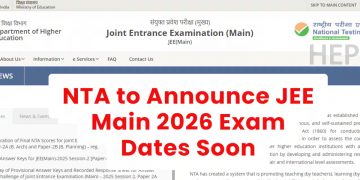India’s higher education system stands at a crucial juncture—poised between a rich intellectual tradition and the growing need for global alignment. Drawing from her experience with international institutions like Lancaster University and her leadership role at BML Munjal University, Jaskiran Arora highlights the pressing need for Indian HEIs to adopt structured academic certification programs, revamp assessment methods, and support faculty development. She advocates for a paradigm shift—from rote-based, content-heavy education to a learner-centered, globally benchmarked model that prepares students for the complexities of modern industry and society. Her perspective not only diagnoses the systemic challenges but also presents a roadmap for transformation—one grounded in reflective teaching, outcome-based education, and the reclamation of India’s intellectual identity.
From your experience with Lancaster University and now working with BML Munjal University, what global best practices in academic quality assurance can Indian institutions adopt?
Foremost, one of the most transformative practices in leading global universities is the encouragement for faculty members to undergo formal certification in academic practices. These certifications—such as those aligned with the UK Professional Standards Framework—are aimed at accrediting and supporting the academic and professional development of educators. The intent is not only to strengthen individual pedagogical competencies but also to elevate the overall learning experience for students in higher education.
These structured programs typically involve an in-depth study of educational and subject-specific literature, critical dialogue with peers and mentors, and reflective writing. They prompt educators to critically examine their own teaching philosophy and align it with contemporary pedagogical values. My own development was deeply shaped by such exposure during a certification program I pursued. It opened my eyes to the transformative potential of research-informed teaching practices.
Unfortunately, in many Indian Higher Education Institutions (HEIs), such certification programs are still unheard of, unwarranted, and often unasked for. As a result, teaching continues to rely heavily on inherited methods—often mirroring how the educators themselves were taught. Rote learning still holds sway, and innovation in teaching methodologies remains limited. Institutional support for structured pedagogical development is scarce, and this remains a critical gap.
Second, there is a stark contrast in how accreditation and ranking processes are approached globally versus in India. For instance, accreditations like AACSB place a strong emphasis on Assurance of Learning (AoL), Learner Progression, and Teaching Effectiveness. These standards compel institutions to deeply reflect on one fundamental question: “What do we want our students to be able to do by the end of this program?”
While India has moved towards Outcome-Based Education (OBE), the depth of engagement with learning outcomes, especially in terms of constructive alignment of – systematic mapping, measurement, and continuous improvement, still leaves room for enhancement. Global standards demand an integrated approach—where curriculum design, delivery, assessment, and feedback loops are tightly aligned with learning goals and continuously improved based on data.
Third, globally, there is a strong emphasis on designing assessments that measure higher-order thinking—critical analysis, problem-solving, creativity, and real-world application. Universities abroad increasingly rely on open-book exams, project-based evaluations, reflective writing, and collaborative assignments. These approaches not only reduce the reliance on rote memorization but also align better with the skills needed in today’s world. In India, however, assessment still largely revolves around proctored, closed-book exams focused on recall. To truly enhance learning outcomes, Indian HEIs must shift towards more holistic and skill-oriented assessment frameworks that reflect global standards and prepare students for complex, real-life challenges.
In conclusion, for Indian HEIs to match global benchmarks in academic quality assurance, there must be a conscious investment in faculty development, meaningful engagement with outcome-based frameworks, and modernisation of assessment practices. Such shifts not only enhance institutional credibility but also ensure our students are better prepared for the global landscape of work and knowledge.

How can universities balance academic rigor with the need to make learning engaging and industry-relevant?
Balancing academic rigor with engagement and industry relevance begins with thoughtful curriculum design. When courses are structured around clearly defined learning outcomes—developed with active industry input—they become more aligned with real-world expectations while retaining academic depth.
Equally important is the intentional use of pedagogy. Integrating active learning strategies—such as case studies, simulations, flipped classrooms, and collaborative projects—transforms students from passive recipients into active participants in the learning process. This not only enhances engagement but also deepens understanding.
Finally, assessment drives preparation. What we choose to assess shapes what students prioritize. If assessments merely test textbook knowledge, students will focus on memorization. But if we assess problem-solving, critical thinking, and application, students will prepare for the world beyond the classroom. In other words, we must move from a “text-to-test” model to a “word-to-world” approach—where academic learning meets practical relevance without compromising on rigor.
What are the biggest challenges in ensuring faculty are continuously upskilled to meet evolving academic and industry expectations?
One of the most significant challenges in ensuring continuous faculty upskilling is the lack of a robust incentive structure. In many institutions, career progression is time-bound rather than performance-based, which can lead to complacency. Upskilling often takes a backseat when there’s no meaningful reward or recognition for it. Moreover, evaluation metrics tend to emphasize quantity over quality—such as counting publications regardless of journal impact or relevance—rather than encouraging substantive academic or professional growth.
The second major barrier is access and opportunity. Quality faculty development programs—especially those focused on contemporary pedagogy, digital tools, and industry relevance—are limited. Even when such programs exist, funding and institutional support are often lacking. Very few universities actively encourage their faculty to take on competency-building initiatives, such as attending workshops, pursuing certifications, or enrolling in global fellowships. The reluctance to offer duty leave or financial backing further compounds the issue.
Lastly, there’s an underutilized bridge between academia and industry. Industry sabbaticals or immersion opportunities for faculty—common in global institutions—are rarely available or encouraged in India. These experiences are critical for faculty to stay in tune with evolving industry practices and bring that insight back into the classroom.
Addressing these challenges requires a mindset shift—viewing faculty development not as a cost but as a strategic investment in academic excellence and institutional credibility.

You have worked in both academic institutions and corporate houses. What are the most significant gaps between industry expectations and academic training?
One of the most significant gaps between academic training and industry expectations lies in the nature of problems students are trained to solve. In academia, problems are typically subject-specific—clearly defined within silos such as finance, programming, or mathematics. In contrast, industry problems are complex, unstructured, and interdisciplinary. They don’t come with labels; they require identification, framing, and then solving. Unfortunately, most Higher Education Institutions (HEIs) still rely on content-heavy, domain-specific assessments and rarely incorporate problem-based learning that mirrors the ambiguity of real-world challenges.
A second gap is the limited emphasis on building professional competencies. Skills like ownership, accountability, adaptability, and the ability to connect dots across functions are essential for success in any corporate environment. However, these are seldom explicitly taught or assessed in academic settings. Curricula tend to prioritize subject knowledge over behavioural and cognitive skills critical to workplace performance.
Lastly, the lack of training in collaboration is striking. In industry, virtually all projects are team-driven, requiring individuals to contribute effectively within diverse groups. Yet, academic systems often reward individual performance—through solo exams and assignments—without giving students enough exposure to collaborative, outcome-driven work.
Bridging these gaps calls for a reimagining of curriculum, pedagogy, and assessment—infusing them with real-world complexity, skill development, and team-based learning models.
How do you see AI is transforming education and training?
At present, there is more buzz than tangible transformation when it comes to AI in education—but the potential is undeniably profound. Whether that potential is realized positively or negatively will depend largely on how well educators are supported and trained by their institutions.
On the positive side, AI offers unprecedented opportunities for personalized learning. With the right tools, educators can tailor content to suit diverse learning styles, pace, and needs—something traditional classrooms often struggle to achieve. However, this requires edtech developers to work in close collaboration with educators, enabling them to design and deploy AI-enhanced learning modules effectively.
On the flip side, there’s a valid concern that AI might erode the mastery of foundational skills—much like how calculators were once seen as detrimental to basic arithmetic. Yet, just as calculators freed us to apply mathematical concepts more creatively, AI too can become a powerful tool for expression, exploration, and higher-order thinking, if integrated wisely.
Ultimately, the impact of AI will be defined not by the technology itself, but by how we use it. As with fire—it can cook a meal or burn a house—the outcome depends on intent, skill, and responsibility. The key lies in training educators to harness AI’s strengths, and guiding students not just to consume AI-generated content, but to think critically, ethically, and creatively in a world where AI is a collaborator, not a crutch.

.What are your thoughts on India’s aspirations to become a global education hub, and what structural changes are needed to achieve this?
India’s aspiration to become a global education hub is both timely and worthy—but to achieve it, we must first confront the historical baggage we carry. Centuries of colonization have left a deep imprint on our education system, one that trained individuals to comply rather than question, to follow rather than lead. The colonial legacy emphasized compliance and obedience, muting creativity and critical thinking—traits essential for any nation aspiring to lead in the knowledge economy.
Despite this, Indians have consistently excelled on the global stage—in space technology, Ayurveda, yoga, information technology, and scientific research. However, as a nation, we often lack a collective sense of pride in our identity and intellectual heritage. To truly emerge as a global education hub, we must first reclaim that pride and build an ecosystem rooted in confidence, not comparison.
Structurally, three key shifts are needed:
Reclaiming our intellectual self-worth: We need to move beyond Western validation and rediscover the depth of Indian thought—our philosophies, pedagogies, and civilizational wisdom. This begins with curriculum reform that integrates Indian knowledge systems alongside global perspectives. Language, literature, indigenous sciences, and value-based education should not be seen as inferior or optional but as core components that reflect our roots and shape global citizens with a grounded identity.
Greater investment in research and innovation: India’s higher education system must prioritize original research, interdisciplinary exploration, and academic freedom. Funding needs to go beyond infrastructure and support deep inquiry—especially in social sciences, fundamental sciences, and emerging technologies. Incentivizing research, reducing bureaucratic roadblocks, and building global collaborations can position Indian institutions as generators—not just consumers—of knowledge.
Reversing brain drain into brain gain: We must actively incentivize Indian talent abroad—academics, entrepreneurs, scientists—to return or remain engaged with India. Offering world-class research opportunities, startup grants, academic positions, and autonomy can help transform India into a destination for high-quality global talent, including our own diaspora.
As Swami Vivekananda once said, “We are what our thoughts have made us; so take care what you think. Words are secondary, thoughts live, they travel far.”
Let us begin by thinking boldly, building deeply, and believing in our own story.


























































